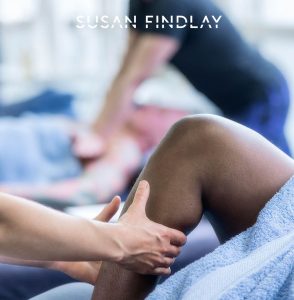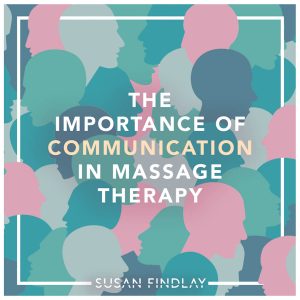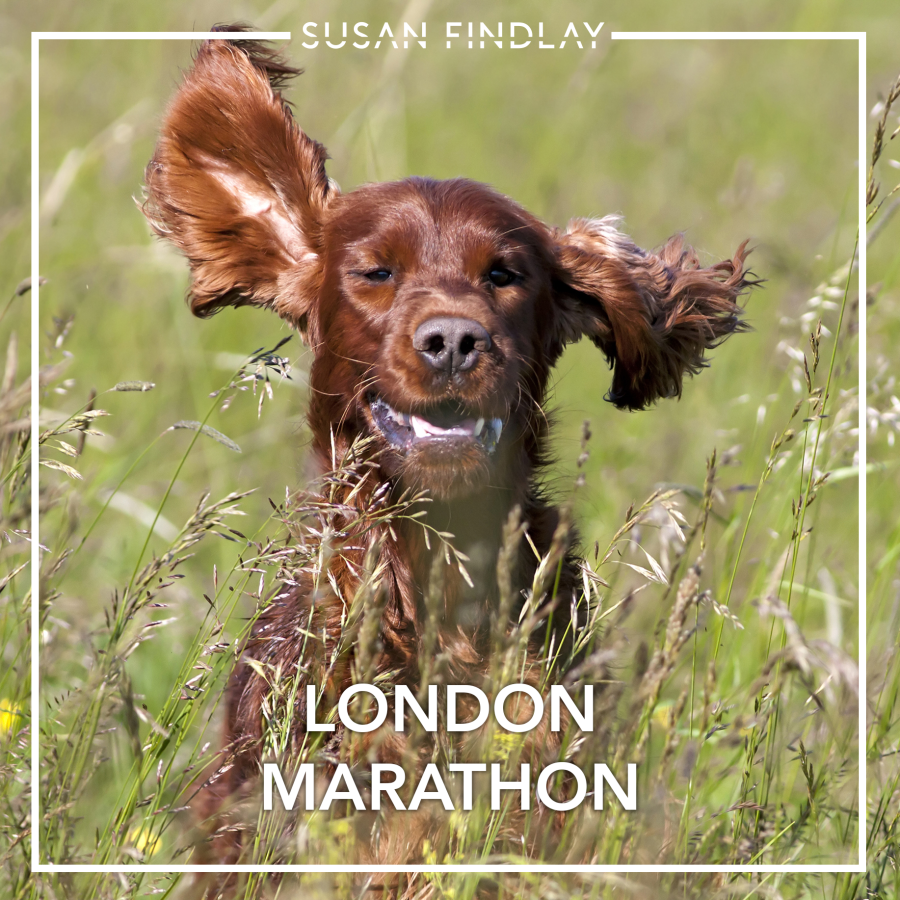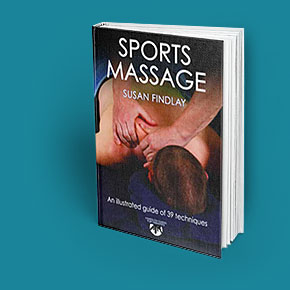Although the winter days are still short, and the weather unusually cold and white, runners are out there trying to prepare for the London Marathon. Some will start a training regime that builds up their stamina gradually over the next few months. Others will wait until the weather is a bit more favorable but will inevitably leave themselves less time for the body to make the necessary adaptations needed to complete 26.2 miles. Finally there will be those who start training just a few weeks before and realize they have left it too late and will hope for the best…survival.
On the extreme end of the scale, I had a client who came in the day after the marathon for a massage who had not trained for the event. The only thing she had going for her was she was a fairly fit person. For the first 7 miles she bounced around, laughing, being a bit of an entertainer, pleased at how easy it all was. Then after the half way point she realized she had a long way to go, and started to get a bit more serious, but by then she taken up a lot of the energy she needed to complete the distance.
She booked me the next day for a massage. I asked about her training, “ oh it was a last minute thing” was the reply. She had no specific training other than her current level of fitness and she suffered for it. That is not an ideal scenario, but one you might be faced with as a therapist. At whatever point your clients come for a massage, their needs will vary, presenting different challenges at each stage of training.
Janet’s Story
Janet was coming up to her 50th birthday, although slim and long legged in stature, biomechanically she had limitations. She is someone I would not actively encourage to run long distances simply because she lacks the support and absorption needed when making contact with the ground due to a lack of arches in her feet. But it was important that I considered her ultimate desire to run a marathon in her 50th year and rose to the challenge. It may not be the ideal situation, but this is what makes this profession interesting.
She had what is referred to as pes planus, often called flat feet. Although the arches were not completely collapsed, her feet were not doing a good enough job of absorbing the impact from the foot hitting the ground. Instead the force that is generated through the feet goes directly through the joints of the skeletal system rather than the muscles. This can lead to joint injuries and pain.
Janet’s initial appointment was for knee and lower back pain. At this time I chose to do a full postural assessment and gait analysis. The assessment confirmed her feet greatly contributed to the problem.
Recommendations were:
1. A pair of running shoes with extra cushioning for absorption. Highly recommended are specialist running shops, as they have the knowledge and observation skills to fit people appropriately for the sport.
2. Professionally fitted orthotics (inserts for the shoes).
3. Alternate the road running with the treadmill and include other disciplines to help build up her cardiovascular fitness i.e. cycling.
4. Her training also needed to include non-impact choices such as using the cross trainer, bike or swimming, to increase her endurance and stamina.
5. Janet needed to build up muscle strength and engage the underused muscles, such as gastrocnemius, soleus, and quadraceps.
6. Stretching the tight and overused muscles such as the hip rotators. Muscle Energy Techniques and Soft Tissue Release, and Activated Isolated Stretching are examples of effective stretching techniques used.
7. Regular soft tissue work, this will help to maximize soft tissue health as well as aid in restoring muscle balance and prevent further injuries.
For Janet it took her a bit longer to build up to the level of fitness needed to do the distance on the road due to her restrictions and this had to be worked into her training schedule. In the end, she did the Marathon in less than 4 hours, which is an great time even without all the extra challenges she faced.
 A Last Minute Massage
A Last Minute Massage
Generally people underestimate the effects and benefits of regular massage as part of their training regime. Hence if you get someone who has not had any or regular massages yet wants one close to the marathon i.e. the week before the event, you will need to be cautious and modify your approach. They may bring a list of “mild niggles”, which have been plaguing them for months, but have not considered them important and have “run through them”. This is not the time to try to fix any underlying issues as it could spell a disaster. Therefore, it is recommended that you do a general flush leaving the remedial work for post marathon.
The week before the marathon is when runners should be tapering down, having a week of active rest, so as to build up an abundance of energy in the muscles. If remedial work is commenced at this time, not only will the body go into healing mode, but in essence, the massage will rob the athlete of their energy reserves.
It can be a challenge to find the balance between achieving a “good flush” and taking it too far in that the body is having to repair and recover. Keep in mind that it is much better to do less than to go too deep and do too much.
Here is a great opportunity to educate your client about the benefits of regular Sport & Remedial Massage in conjunction with training and without making them feel like they won’t make it to the end this marathon.
The Value of Rest Days
One of the primary focuses of Sport & Remedial Massage is to keep clients injury free. One of my athletes shared some very sensible training advice on how he stays injury free, which is simple and effective.
He uses massage to gauge how his muscles are handling the hours of training, and understands the importance of keeping the tissue flushed and finely tuned. Principally he trains until he reaches his optimum level and then rests. He advocates that it is important that he does not over train. The resting period is vital for recovery and the building of strong tissue.
For some a rest day is not a word that is in their vocabulary. Training to a point of total exhaustion can create a situation wherein the tissues are struggling to repair and keep up with the demand. There is not enough down time for the muscles to recover leading to a build up of micro trauma and stresses being placed on the musculoskeletal system. Over time this can lead to injuries. Encourage your runners to listen to their bodies and have regular massages to help them maintain their optimal performance.
 Words are as Important as the Massage
Words are as Important as the Massage
Our communication skills can play an important role in the mental outlook and possibly the performance of our athletes. For instance when you find areas of tension, trauma, or imbalance, it is essential your words suggest a solution, or reflect a way forward.
Hopefully with good communication skills you will help to create a better sense of body awareness and increase their training skills. As in all therapies, it is equally important to recognize when something is beyond your remit and refer when appropriate.
Post Marathon Massage
It is a rewarding experience to do volunteer to work at events, but there is something extra special if you are planning to massage at the London Marathon. The atmosphere is inspiring, the stories are as varied as the people, and no one forgets their experience of their day.
Post event massage usually consists of good basic strokes that flush the muscles in the legs, and sometimes around the shoulder area. It can last anywhere from 10 to 20 minutes, any more than that can be stressful on an area that is already under stress.
If you are working with a charity, usually they will have someone from a medical team assessing each person for injury before they get to the massage area. Sometimes someone does slip through and you need to be aware of symptoms for hyper and hypothermia, heat exhaustion, heat stroke, & dehydration.
Muscle Cramps
During a post marathon massage, it is not unusual for a runner to suffer from cramps. This can be due to: fatigue, dehydration, electrolyte imbalance (calcium, potassium, magnesium), muscle strain and injury.
Treatment
1. Bring origin and insertion of muscle closer together.
2. Stretch
3. Direct pressure may also help.
4. Ice massage
5. Replace fluids and electrolytes
Most runners while having their massage post race say they will never do it again, but are glad they have done it. Then a week later they will start talking to you about the next one they are planning to do. It is a bit like giving birth, we soon forget the pain and just remember the joy.
Pre-Event Advice
Running shoes: keep a rotation of 3 pairs at different stages of wear, an older pair, medium wear, and a new set. There is a big difference in how the shoe functions between new and used. In order to adjust to the differences, it is best to break in the new ones, while you are still training with other shoes at different stages of wear. Never wear a new pair to do the marathon.
Clothing: always make sure that the runner has already run long distances in their chosen outfit of the day. They should not wear anything new as chaffing can be a big problem. It is usually from a bit of new gear that has been put aside for the special day and has not been tried and tested that leads to problems.
Hydration: It is important to remain hydrated but equally important to not over hydrate. For every kilogram of bodyweight you lose, you need to drink one-and-a-half litres of fluid. Runners who have been running for less than an hour can consume plain water but if it has been for longer then add a bit of sugar or maltodextrin (a slow-release carbohydrate) and sodium to help with their recovery.
Why Volunteer?
If you have never volunteered to be a therapist at a marathon, I highly recommend it. It is a great opportunity to develop your skills, gain valuable experience, and give your time to a worthy cause.

